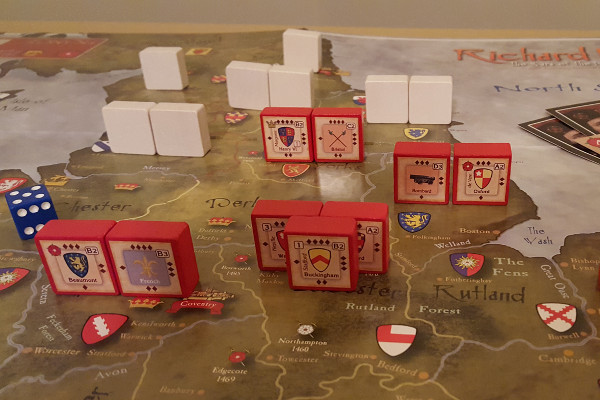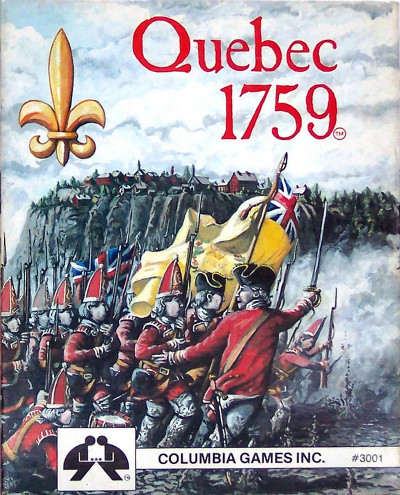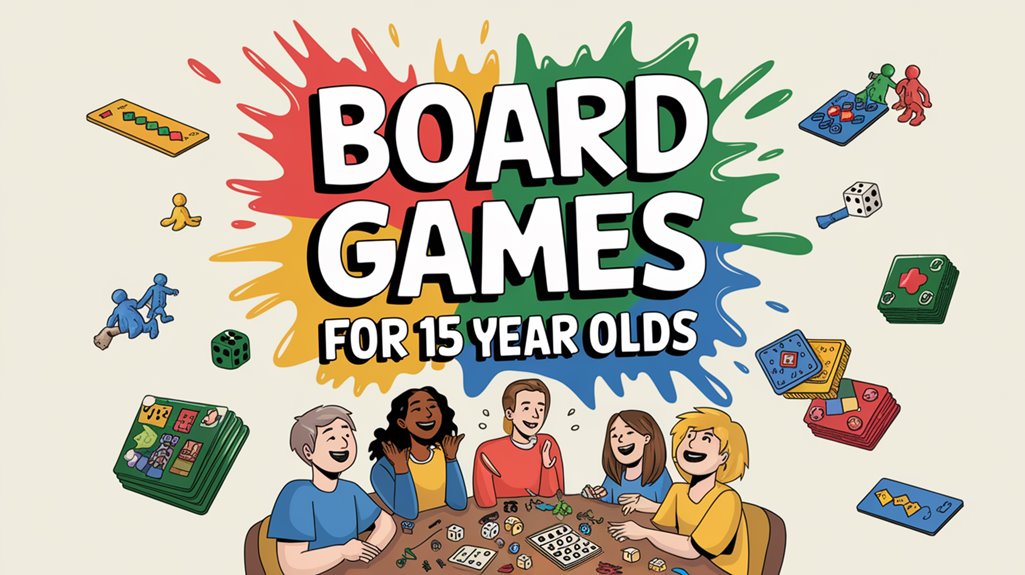Block wargames represent a unique intersection of military strategy and tabletop gaming, where wooden blocks serve as the primary playing pieces to simulate historical battles and campaigns. This distinctive format emerged from 19th-century military training exercises and has evolved into a sophisticated gaming genre that masterfully captures the uncertainty of warfare. Unlike traditional board games where all information is visible, block wargames maintain an element of mystery by keeping unit information hidden from opponents until engagement occurs. This clever mechanism recreates the fog of war that commanders historically faced, forcing players to make decisions based on limited intelligence and calculated risk.
Key Takeaways
- Block wargames are strategic board games using wooden blocks to represent military units, with unit information hidden from opponents.
- Players maneuver blocks on detailed maps, revealing unit strengths only during combat to simulate battlefield uncertainty.
- Blocks rotate to show different strength levels as units take damage, eliminating the need for separate damage markers.
- Originally developed for military training in the 19th century, these games now offer realistic warfare simulation for civilian players.
- Combat resolution involves dice rolls and strength checks, with terrain and supply lines affecting outcomes during tactical engagements.
The Origins of Block Wargaming
During the early 19th century, block wargaming emerged from traditional military planning exercises, where wooden blocks represented troop formations and military units. Military commanders used these blocks on maps to plan strategies and simulate battles, allowing them to test different tactical approaches without risking actual troops.
The Prussian army significantly advanced block wargaming through their development of Kriegsspiel in 1824. Lieutenant Georg von Reisswitz created this sophisticated system, which included detailed rules for movement, combat, and supply lines. This innovation helped transform military planning from abstract theory into practical simulation.
Block wargaming gained broader appeal when civilians began adapting military training tools for recreational purposes. By the late 1800s, manufacturers started producing commercial versions that simplified the complex military rules while maintaining strategic elements. The wooden blocks provided an element of hidden information, as players could only see their own units’ details, creating tension and uncertainty similar to real battlefield conditions. This “fog of war” concept became a defining characteristic of block wargames, distinguishing them from other tabletop strategy games and establishing their enduring appeal among military history enthusiasts.

Essential Components and Materials
The fundamental components of a block wargame consist of wooden blocks, printed labels, maps, and reference materials. These wooden blocks, typically made from high-quality hardwood or birch, serve as unit markers and come in various sizes to represent different military formations. Labels attach to one side of each block, displaying unit information such as combat strength, movement capability, and unit type.
The game board usually features a detailed map printed on heavy cardstock or mounted cardboard, showing terrain features, cities, and strategic locations relevant to the historical scenario being portrayed. Reference cards and charts provide players with important information about combat resolution, movement costs, and special rules specific to the game’s period or battle.
Additional components often include dice for combat resolution, victory point markers, and scenario booklets containing setup instructions and historical context. The blocks stand upright during play, with the labeled side facing the controlling player, creating a fog-of-war effect where opponents can see block positions but not their specific capabilities until combat occurs.
How Block Wargames Work
Block wargames operate through a distinctive system where wooden blocks stand upright on their edges, concealing unit information from the opponent while revealing it to the controlling player. The hidden movement mechanics allow players to maneuver their forces across the game board without revealing their true strength or unit type until combat occurs, creating tension and uncertainty similar to real battlefield conditions. When units engage in combat, the blocks are revealed to show combat values and unit types, with resolution typically involving dice rolls modified by factors such as terrain, supply lines, and unit capabilities.
Hidden Unit Movement Mechanics
Hidden unit movement mechanics form a distinctive core feature of block wargames, where wooden blocks representing military units stand upright on their edges, facing the controlling player while concealing unit information from opponents. This fog-of-war system creates uncertainty and requires strategic decision-making based on limited intelligence, similar to real battlefield conditions.
The concealment mechanics operate through several key principles:
- Players can only see the blank backs of enemy blocks, masking unit types, strengths, and capabilities until combat occurs
- Movement occurs in turns, with players relocating their blocks across the map board while maintaining their vertical orientation
- Units reveal themselves only during combat resolution, when blocks are rotated to face all players
- After combat concludes, surviving units return to their upright, hidden position
This hidden movement system forces commanders to make tactical choices without perfect information, adding layers of bluffing and deduction to gameplay. Players must carefully consider their reconnaissance efforts, defensive positions, and offensive maneuvers while attempting to anticipate enemy force compositions and locations. The mechanics effectively simulate the fog of war that military commanders face in actual conflicts.
Combat Resolution With Blocks
When military units meet in battle during block wargames, combat resolution mechanics reveal the true nature of opposing forces while maintaining elegant simplicity. Players rotate their blocks to display current strength levels and roll dice corresponding to these values, creating an efficient combat system that reflects realistic attrition.
| Combat Action | Basic Effect | Advanced Rules |
|---|---|---|
| Strength Check | Unit power determines dice rolled | Terrain may modify dice count |
| Hit Resolution | Each die meeting target number scores hit | Combat bonuses apply to specific units |
| Damage Application | Rotate block counterclockwise to reduce strength | Retreat options may be available |
The combat sequence typically follows a structured order where attacking units fire first, followed by defending units returning fire. Hits are applied immediately, requiring players to rotate affected blocks to their reduced strength facing. This system creates tension as units gradually weaken throughout the battle, mirroring real-world combat exhaustion. Some games incorporate special rules for artillery, cavalry charges, or defensive fortifications, adding strategic depth while maintaining the core mechanics’ straightforward nature.

Fog of War Mechanics
Block wargames excel at recreating the uncertainty of real battlefield conditions through their hidden movement systems. Players can only see the strength and type of enemy units when direct combat occurs, maintaining an authentic fog of war throughout gameplay. This limited intelligence mechanic forces commanders to make strategic decisions based on incomplete information, much like actual military leaders who must operate without perfect knowledge of enemy positions and capabilities.
Hidden Movement Systems
Concealing troop movements and creating uncertainty lies at the heart of block wargaming’s hidden movement systems. These systems allow players to maneuver their forces across the game board while keeping their true strength and composition hidden from opponents until combat occurs. The wooden or plastic blocks, standing upright and facing their controlling player, create a natural screen that maintains battlefield fog of war.
The core mechanics of hidden movement systems typically include:
- Blocks that rotate to show different unit strengths, revealing actual power only during combat
- Step reduction systems that gradually decrease unit strength through battle damage
- Limited intelligence rules that restrict players from examining enemy units until engagement
- Movement protocols that allow forces to relocate without revealing their true identity
This elegant approach to simulating military intelligence and reconnaissance creates dynamic gameplay where players must make decisions based on incomplete information. Commanders must balance the risks of aggressive movement against the possibility of walking into ambush, while carefully managing their reconnaissance efforts to gain tactical advantages. These mechanics effectively model the uncertainty faced by real military leaders throughout history.
Limited Intelligence Operations
Limited intelligence operations form the backbone of realistic fog-of-war mechanics in block wargaming systems. Players must make decisions based on incomplete information about enemy forces, creating tension and strategic depth in gameplay. The wooden blocks, standing upright and facing their owners, hide unit information from opponents until combat occurs, simulating the uncertainty of real battlefield conditions.
| Intelligence Level | Information Known | Player Actions |
|---|---|---|
| Full Knowledge | Own Forces | Plan Freely |
| Partial Knowledge | Visible Units | Scout Enemy |
| Limited Knowledge | Unit Location | Make Estimates |
| Hidden Knowledge | Force Size | Take Risks |
| No Knowledge | Enemy Intent | React Quickly |
This system forces commanders to rely on careful observation, deduction, and calculated risk-taking. Players must balance aggressive moves against the possibility of walking into traps, while defending against threats that may or may not exist. The mechanics reward skillful reconnaissance, proper force deployment, and the ability to adapt when assumptions prove incorrect. These elements combine to create an experience that captures the essence of military command decisions under uncertain conditions.
Popular Block Wargame Titles
Several notable block wargame titles have achieved widespread recognition within the gaming community. These games have proven their endurance and appeal through multiple editions and sustained player interest over many years. The combination of strategic depth and historical authenticity has contributed to their lasting popularity among enthusiasts.
Some of the most influential and respected block wargames include:
- Columbia Games’ “Hammer of the Scots,” which recreates the Scottish Wars of Independence and has become a benchmark for accessibility in block wargame design
- “Napoleon,” another Columbia Games title that simulates the Waterloo campaign with remarkable historical accuracy and engaging gameplay mechanics
- “Julius Caesar,” focusing on the Roman Civil War, which demonstrates the versatility of block warfare concepts in ancient settings
- “East Front,” a thorough simulation of World War II’s Eastern Front operations that showcases the fog-of-war capabilities unique to block wargames
These titles represent different historical periods while maintaining core block wargame principles of hidden information and strategic deployment. Each game offers distinct challenges and historical perspectives, contributing to the genre’s diversity and educational value.
Strategic Advantages of Block Systems
Block wargames’ most distinctive feature lies in their unique ability to create genuine fog-of-war conditions through the vertical positioning of blocks. This design element allows players to see only their own units’ specific details while opponents can view just the blocks’ general locations, creating natural hidden information that mirrors real battlefield uncertainty.
The block system offers several key strategic advantages over traditional cardboard counter wargames. First, it eliminates the need for complex written rules about hidden movement or unit identification, as the physical blocks naturally conceal information. Players must make decisions based on limited intelligence, forcing them to balance risk and reward when planning operations. Furthermore, blocks can rotate to display different strength values, elegantly tracking unit damage without requiring separate markers or paperwork.
This system likewise speeds up gameplay by reducing the need for reference sheets and complex calculations. Players can quickly assess the situation based on visible information while maintaining strategic depth through the uncertainty of enemy forces, making the games both accessible and challenging for experienced strategists.
Setup and Basic Gameplay
Initial setup in wargames using blocks typically involves arranging forces according to historical deployments or predetermined starting positions marked on the game board. Players position their wooden or plastic blocks with unit information facing away from opponents, creating an element of hidden information that mirrors the fog of war in actual military conflicts.
The basic gameplay follows a structured sequence of actions that maintains strategic depth while keeping mechanics straightforward:
- Movement Phase – Players relocate their blocks across the map according to terrain and movement allowances, maintaining secrecy until combat occurs
- Combat Phase – When opposing forces meet, blocks are revealed and battles are resolved using dice rolls or combat tables
- Supply Phase – Units must trace supply lines to friendly bases or risk becoming isolated and weakened
- Reinforcement Phase – New units may enter play according to scenario rules, while damaged units can be repaired
Throughout gameplay, players must carefully manage their resources while gathering intelligence about enemy positions through combat encounters. The block system elegantly combines strategic planning with tactical decision-making, as units can only be identified when engaged in battle.
Modern Block Wargame Design
Contemporary wargame designers have refined the block system to create more sophisticated and engaging experiences while maintaining its core appeal of hidden information. Modern designs incorporate variable movement rates, combat bonuses, and specialized unit abilities that add strategic depth without overwhelming complexity. These innovations allow players to make meaningful choices while preserving the fog-of-war mechanics that define the genre.
Recent block wargames feature improved production methods, with clearer graphics and more durable components that improve gameplay clarity. Designers now commonly include multiple scenarios, branching campaign systems, and variable victory conditions that increase replayability. The integration of supply lines, weather effects, and terrain modifiers creates more realistic battlefield simulations.
Many modern titles balance historical accuracy with streamlined rules that reduce bookkeeping while maintaining strategic challenge. Games often include optional rules that let players adjust complexity levels based on preference and experience. Designers frequently incorporate asymmetric forces, unique faction abilities, and special units that reflect historical advantages and disadvantages. These developments have helped block wargames remain relevant in contemporary gaming while preserving their distinctive characteristics.
Notable Designers and Companies
Renowned for their innovative contributions, Tom Dalgliesh and Columbia Games have been instrumental in the advancement of block wargames. Dalgliesh’s creations like ‘Hammer of the Scots’ and ‘Crusader Rex’ captivate enthusiasts, while Columbia Games has been a leading figure in the genre since the 1980s.
Other notable companies in the field include:
- Columbia Games: Leading the charge in block wargame development with an extensive catalog of innovative titles.
- GMT Games: Broadening the horizons of block wargames with standout titles like ‘Europe Engulfed’ and ‘Asia Engulfed.’
- Simmons Games: Pushing design boundaries with unique elongated blocks in ‘Bonaparte at Marengo.’
- Avalon Hill: Known for traditional wargames, but also contributing to the evolution of block wargames.
These designers and companies offer players diverse and immersive gaming experiences.


